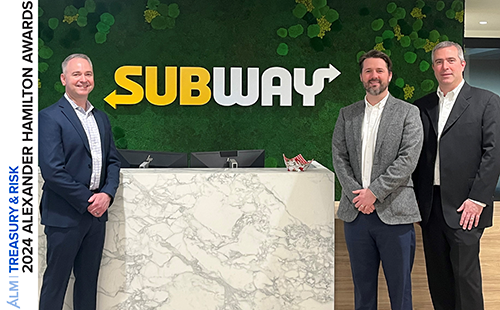McDonald's was pushing forward at full speed with capital-intensive projects that would have to be funded with debt, as well as cash flow, when the credit crunch hit. Many corporations brought expansionary programs to a screeching halt as credit availability vanished, but McDonald's never slowed down.
Keeping credit flowing, not only to the company but to its 5,000 worldwide franchisees and to key suppliers, posed a serious challenge. "Our system needed significant liquidity between January 2008 and May 2009," recalls Robert Donovan, corporate vice president of finance at McDonald's, "and treasury had to facilitate access to capital in the worst credit environment many of us could remember. Yet we were able to access more credit during this period than at any time in our history." Still on track: a program to return $15 billion to $17 billion to shareholders by the end of 2009 through dividends and share buybacks.
McDonald's needed significant capital to finance the rollout of its McCaf? beverage business to more than 11,200 restaurants, the biggest product rollout since the chain introduced breakfast in the 1970s. Keeping franchisees liquid was a top priority. Treasury lined up nearly 100 new lenders through an intense focus on the franchise credit model and the McDonald's story.
Recommended For You
That influx more than tripled the number of lenders available to franchisees, which own 87% of McDonald's 14,000 U.S. restaurants. Even though franchise lenders have no recourse to McDonald's, they generally recognize the synergies between the corporation, its franchisees and its supply chain. McDonald's A-rated public debt and its sales numbers influence the tenor and rates extended to franchisees, explains assistant treasurer Cynthia Fuller.
In addition, several key suppliers that sell primarily to McDonald's are privately owned and had revolving term loan facilities that had to be renewed in late 2008 and early 2009. To keep the suppliers liquid, treasury introduced other banks that knew the company well. As a result, all of the suppliers renewed their five-year deals, raising more than $1 billion. The spreads over an index were higher but the indexes were lower, so the net cost was fairly stable, Donovan reports. To bolster its own liquidity, McDonald's began to opportunistically issue the equivalent of $4.1 billion of term funding in the global debt markets. It started in February 2008 with $1 billion of 10-year notes, $500 million of five-years and $750 million in 30-year bonds. Pricing ranged from 145 to 168 basis points over comparable Treasuries. Then in March, taking advantage of strong reverse inquiry, McDonald's used its euro medium-term note program to issue 500 million euro of seven years with a coupon of 5%. With the financial markets in turmoil after the Lehman bankruptcy, McDonald's was still able to sell short-dated commercial paper through September, October and November, as well as negotiate a 40 billion Japanese yen syndicated bank term loan for just over five years at 70 basis points over Japanese Libor. In January of this year, the company issued $750 million from its medium-term note program. In June, McDonald's demonstrated its market acumen when it made a small offering to a hungry market–just 300 million euro notes with a coupon of 4.25%–that was oversubscribed by 21 times in just 20 minutes. Such demand allowed the lead arrangers to cut 30 basis points from the initial whispers, reports Phil Cabrera, the company's international treasurer. That was the tightest pricing by a single-A issuer since the Lehman collapse. Being able to access liquidity and finance those projects at advantageous terms and pricing meant "McDonald's could proceed with all of its initiatives, despite the worldwide financial conditions," says Darin Aprati, McDonald's director of capital markets.
© 2025 ALM Global, LLC, All Rights Reserved. Request academic re-use from www.copyright.com. All other uses, submit a request to [email protected]. For more information visit Asset & Logo Licensing.




